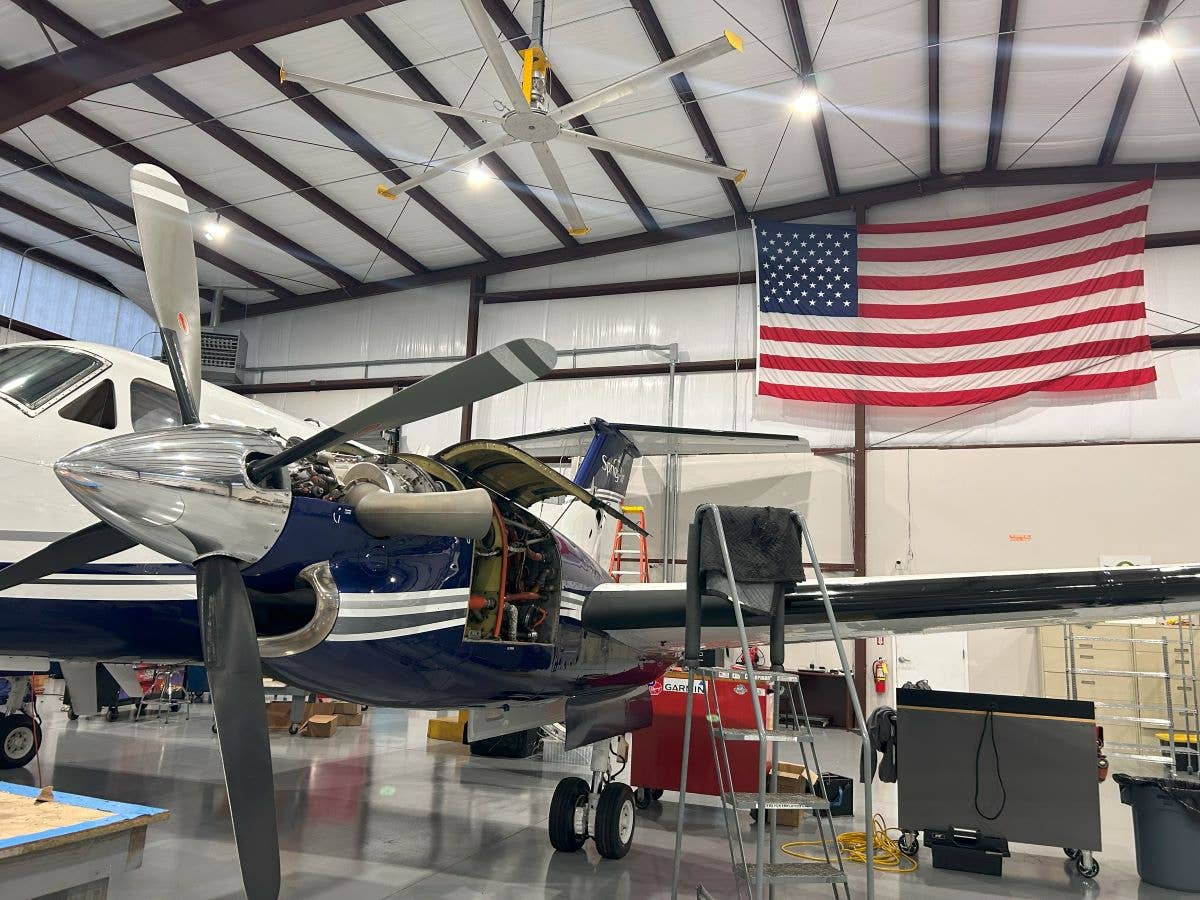5 Attributes of a Top-Notch Maintenance Provider
Aircraft maintenance is a touchy topic around the airport. There is no shortage of opinions on maintaining aircraft. Just ask them, and they will be eager to share. Working on…

With a little due diligence, one can ascertain if a maintenance provider’s tooling is in order and technical publications accessible. [Photo provided by Richard Scarbrough]
Aircraft maintenance is a touchy topic around the airport. There is no shortage of opinions on maintaining aircraft. Just ask them, and they will be eager to share.
Working on airplanes is like the Wild West sometimes. You have the good, the bad, and the ugly. Here are the top five attributes that should indicate your mechanic or shop is operating in the green:
Certifications
In the 1989 movie Parenthood, Keanu Reeves’ character states you need a license to buy a dog, drive a car, and even catch a fish. Guess what else you need a license for? If you said work on an airplane, you would be wrong.
You need a license to return an airplane to service. Are individuals certified airframe and powerplant (A&P) mechanics? If you are inquiring about a maintenance repair and overhaul (MRO), are they CFR Part 145 certified?
Stick with certified mechanics and shops. Just because someone’s cousin has a sick Chevelle and could change your Mooney’s oil doesn’t mean you should let them.
Tools and Equipment
Tools and shop equipment are the mechanisms by which we aircraft mechanics ply our trade. Are the tools calibrated? Like a surgeon’s scalpel, we rely on the precision of our measuring instruments, the integrity of the torque wrench, and the sweet sound of the one-quarter-inch SK ratchet clicking through its turn.
Airplanes are notorious for tight turn radius, and the SK version was second to none. For top-notchers, it is all about performance, not the show.
Technical Publications
Just like a pop quiz, if an inspector casually inquires about the airspeed velocity of an unladen swallow, the proper thing to do is puff up one’s chest and spout the answer in a good voice, right?
Wrong.
I have mentioned my ex-partner from the engine shop and his propensity to drop some knowledge on anyone who crossed his path—especially the FAA. It finally got to the point where I coached my crew to answer, regardless of the question, with this phrase: “Whatever the latest revision of the manual states.”
I once had a primary maintenance inspector (PMI) advise me to stamp any printed material “FOR REFERENCE ONLY” in big red letters. His rationale was that the manual could have changed while we walked from the office to the shop.
I know this seems a bit like overkill, but there is truth in the sacred texts. It amazes me the number of mechanics I encounter who call the parts dealer with no clue as to the part number of their line replaceable unit (LRU). Ensure the facility you use is up to date and has the content library for your make and model.
Safety
Have you ever tried to pull over and check under the hood at 9,000 feet? That’s tough to do. Of course, no one is perfect, and accidents happen, but at what severity and frequency?
Do a little homework on the shop or mechanic you are considering. Have they been cited by the FAA for naughty behavior? Remember, it’s all fun and games until someone gets their name in the newspaper.
Culture
The previous points are fairly straightforward. Is the entity certified? With a little due diligence, one can ascertain if the tooling is in order, technical publications accessible, and everyone has a clean record.
What you truly need to understand is the culture. Specifically, are the employees empowered to speak up if something is wrong? In the case of a sole proprietor, is he or she the type of person to come clean and be honest with you?
We had a standing rule at my 145 engine shop. If you drop a tool in an engine and you raise your hand in confession, nothing bad will happen to you. It might be a long weekend, and no one is going fishing on Saturday, but zero disciplinary action would come down on you. What would happen is called a safety stand-down, Everyone stops what they are doing, and we go after the tool/part/foreign object debris.
Have you ever heard the phrase “trust your instincts?” Well, it applies in this case as well. The best piece of advice I will give you—and I cannot stress this enough—is to spend some time on-site. Visit the shop several times if you can. Go unannounced and see how the staff react. I once knew a shop where, upon first sight of a dark late model Ford, the employees would scatter to the wind—all of them. For the record, I do not recommend that shop to my clients.
You will notice I didn’t mention how long it has been in business. Experience matters, but only competent experience. There are some working in the industry that are doing it wrong and have been for years. Stick with the professionals.
Editor’s Note: This article first appeared on Flying.

Subscribe to Our Newsletter
Get the latest Plane & Pilot Magazine stories delivered directly to your inbox






